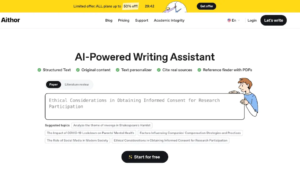Learn the art of article writing with the ultimate guide from the Articles Factory. Discover valuable tips and tricks to enhance your writing skills, including effective research techniques, engaging introductions, and compelling conclusions. Explore the importance of structure, grammar, and style, and learn how to captivate readers with powerful headlines and persuasive language. Whether you’re a beginner or an experienced writer, this comprehensive guide will equip you with the tools to create impactful and well-crafted articles.
Importance of Article Writing
Article writing is a fundamental skill that plays a crucial role in various aspects of life. Whether you are a student, a professional, or an aspiring writer, mastering the art of article writing is essential. Articles are a powerful medium of communication that allows individuals to express their thoughts, ideas, and opinions effectively. They serve as a means to inform, educate, entertain, and persuade readers.
Benefits of Mastering Article Writing Skills
Mastering article writing skills offers numerous benefits that can enhance both personal and professional growth. Firstly, it improves communication skills by enabling individuals to articulate their ideas clearly and concisely. Effective communication is vital in various fields, such as academia, business, journalism, and marketing.
Secondly, article writing enhances critical thinking and analytical skills. Through the process of researching and organizing information, writers develop the ability to analyze complex topics, evaluate evidence, and present logical arguments. This skill is valuable in academic writing, problem-solving, and decision-making.
Furthermore, mastering article writing skills can boost creativity and self-expression. Writing allows individuals to explore their imagination, experiment with different writing styles, and develop their unique voice. It provides a platform for self-reflection and personal growth.
Lastly, article writing can open doors to various opportunities. Well-written articles can attract attention from publishers, potential clients, or employers. It can lead to collaborations, freelance writing gigs, or even career advancements. Additionally, articles can be shared on social media platforms, reaching a wider audience and establishing credibility.
Overview of the Guide
The Ultimate Guide to Article Writing: Tips and Tricks from the Articles Factory is a comprehensive resource designed to help individuals improve their article writing skills. This guide covers various aspects of article writing, including planning, research, writing techniques, editing, and publishing.
The guide begins with an introduction to the importance of article writing, highlighting its significance in effective communication and personal growth. It then delves into the benefits of mastering article writing skills, emphasizing the impact it can have on communication, critical thinking, creativity, and career opportunities.
Subsequent sections of the guide provide practical tips and tricks for each stage of the article writing process. It offers guidance on selecting engaging topics, conducting thorough research, structuring articles effectively, using persuasive language, and editing for clarity and coherence. The guide also explores different writing styles and techniques, catering to various genres and purposes.
Throughout the guide, readers will find examples, exercises, and expert advice to enhance their understanding and application of article writing principles. By following the tips and tricks presented in this guide, individuals can develop their article writing skills and become proficient in this valuable form of communication.
Preparing for Article Writing
Understanding the target audience
Before starting the article writing process, it is crucial to have a clear understanding of the target audience. This involves identifying the specific group of people who will be reading the article. Consider factors such as age, gender, interests, and knowledge level. Understanding the target audience helps in tailoring the content to their needs and preferences, ensuring that the article resonates with them.
Conducting research and gathering information
To write a well-informed and engaging article, conducting thorough research is essential. This involves gathering relevant information from credible sources such as books, scholarly articles, reputable websites, and interviews with experts in the field. Research helps in gaining a comprehensive understanding of the topic, identifying key points, and supporting arguments with evidence. It is important to critically evaluate the sources to ensure accuracy and reliability of the information.
Creating an outline for the article
Creating an outline is a crucial step in the article writing process as it provides a roadmap for organizing thoughts and ideas. The outline serves as a skeleton for the article, helping to maintain a logical flow and structure. Start by identifying the main points or arguments that will be covered in the article. Then, arrange them in a logical order, ensuring a smooth transition between ideas. Subheadings can be used to further break down the content and make it more reader-friendly. The outline acts as a guide throughout the writing process, ensuring that all important points are covered and the article remains focused.
Writing Techniques and Tips
Crafting a captivating headline
A captivating headline is crucial for grabbing the reader’s attention and enticing them to read the article. To craft an effective headline, consider using strong and descriptive words that pique curiosity. It should be concise, engaging, and accurately reflect the content of the article. Experiment with different headline styles, such as posing a question, making a bold statement, or using numbers to create a listicle format.
Structuring the article effectively
A well-structured article helps readers navigate through the content easily and enhances their understanding. Start with an introduction that hooks the reader and provides a brief overview of the topic. Use subheadings to break the article into logical sections, making it easier to skim and find relevant information. Ensure a smooth flow by organizing ideas in a logical sequence and using transitional phrases to connect paragraphs.
Using persuasive language and storytelling techniques
Persuasive language and storytelling techniques can make your article more compelling and engaging. Use vivid and descriptive language to paint a picture in the reader’s mind. Incorporate storytelling elements, such as anecdotes or personal experiences, to make the content relatable. Appeal to the reader’s emotions by using rhetorical devices like metaphors, similes, and vivid imagery. This will help create a connection with the reader and make your article more persuasive.
Incorporating relevant examples and evidence
Including relevant examples and evidence strengthens your arguments and adds credibility to your article. Use real-life examples, case studies, or statistics to support your claims and provide concrete evidence. This not only helps the reader understand the topic better but also adds depth and authenticity to your writing. Ensure that the examples and evidence you use are relevant, up-to-date, and from reliable sources.
Ensuring clarity and coherence in writing
Clarity and coherence are essential for effective communication. Use clear and concise language to convey your ideas without ambiguity. Avoid jargon or technical terms that may confuse the reader. Structure your sentences and paragraphs logically, ensuring that each idea flows smoothly into the next. Use transition words and phrases to guide the reader through your article and maintain coherence. Proofread your work to eliminate any grammatical or spelling errors that may hinder clarity.
Editing and Polishing the Article
Proofreading for grammar and spelling errors
Proofreading is an essential step in the article writing process. It involves carefully reviewing the article to identify and correct any grammar and spelling errors. This includes checking for proper punctuation, subject-verb agreement, and sentence structure. By thoroughly proofreading the article, you can ensure that it is free from any language mistakes that may distract or confuse readers.
Checking for consistency and flow
In addition to proofreading for grammar and spelling errors, it is important to check the article for consistency and flow. This involves reviewing the overall structure and organization of the content to ensure that it is logical and coherent. Check that the ideas and arguments presented in the article flow smoothly from one paragraph to the next, and that there is a clear and logical progression of information. Additionally, ensure that the tone and style of writing remain consistent throughout the article.
Enhancing readability and engagement
To make your article more engaging and readable, consider the following tips:
– Use clear and concise language: Avoid using overly complex or technical terms that may confuse readers. Instead, use simple and straightforward language to convey your ideas effectively.
– Break up the text: Long paragraphs can be overwhelming for readers. Break up the text into shorter paragraphs to make it easier to read and digest.
– Use subheadings: Subheadings help to organize the content and make it easier for readers to navigate through the article. They also provide visual breaks and help to highlight key points.
– Incorporate visuals: Including relevant images, graphs, or charts can enhance the visual appeal of your article and make it more engaging for readers.
– Use bullet points or numbered lists: When presenting a series of points or steps, using bullet points or numbered lists can make the information more accessible and easier to follow.
Seeking feedback and making revisions
After editing and polishing your article, it is important to seek feedback from others. This can be done by sharing your article with colleagues, friends, or members of writing communities. Their fresh perspective can help identify any areas that may need improvement or clarification. Take their feedback into consideration and make necessary revisions to further enhance the quality and effectiveness of your article. Remember, the process of editing and polishing is iterative, and seeking feedback can greatly contribute to the overall success of your article.



































